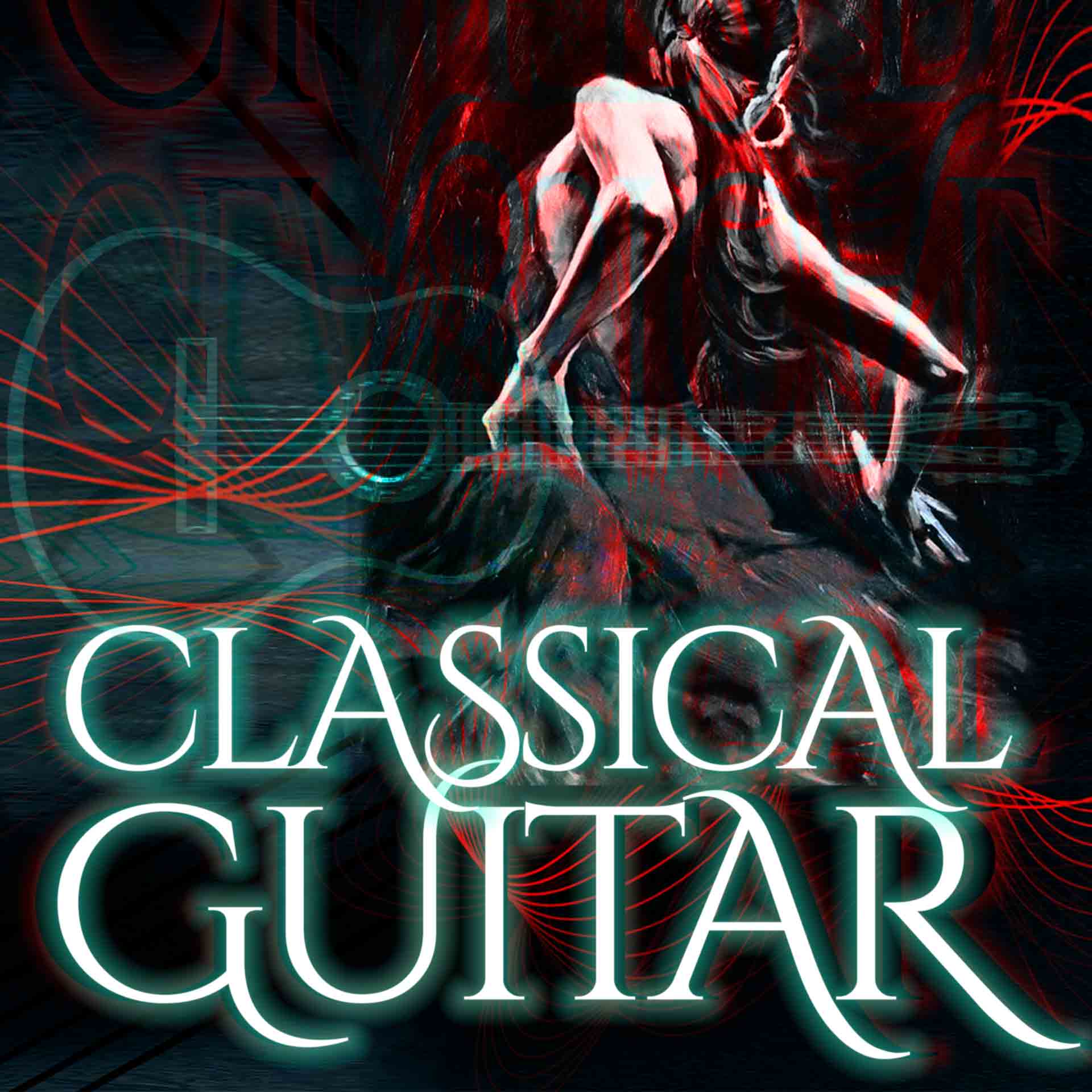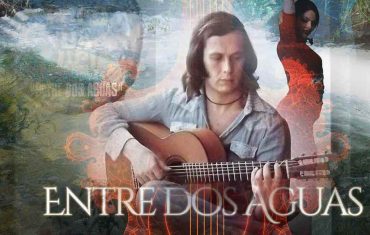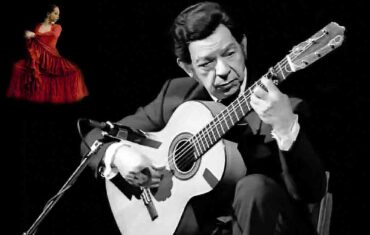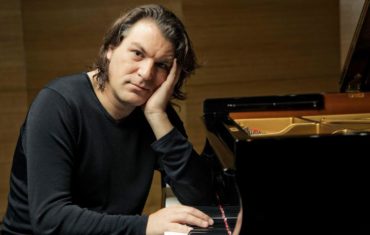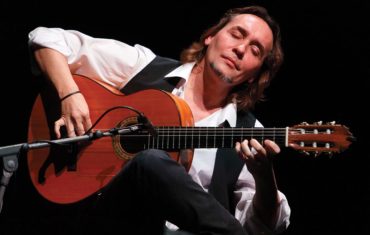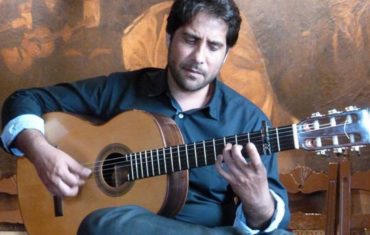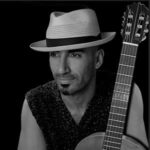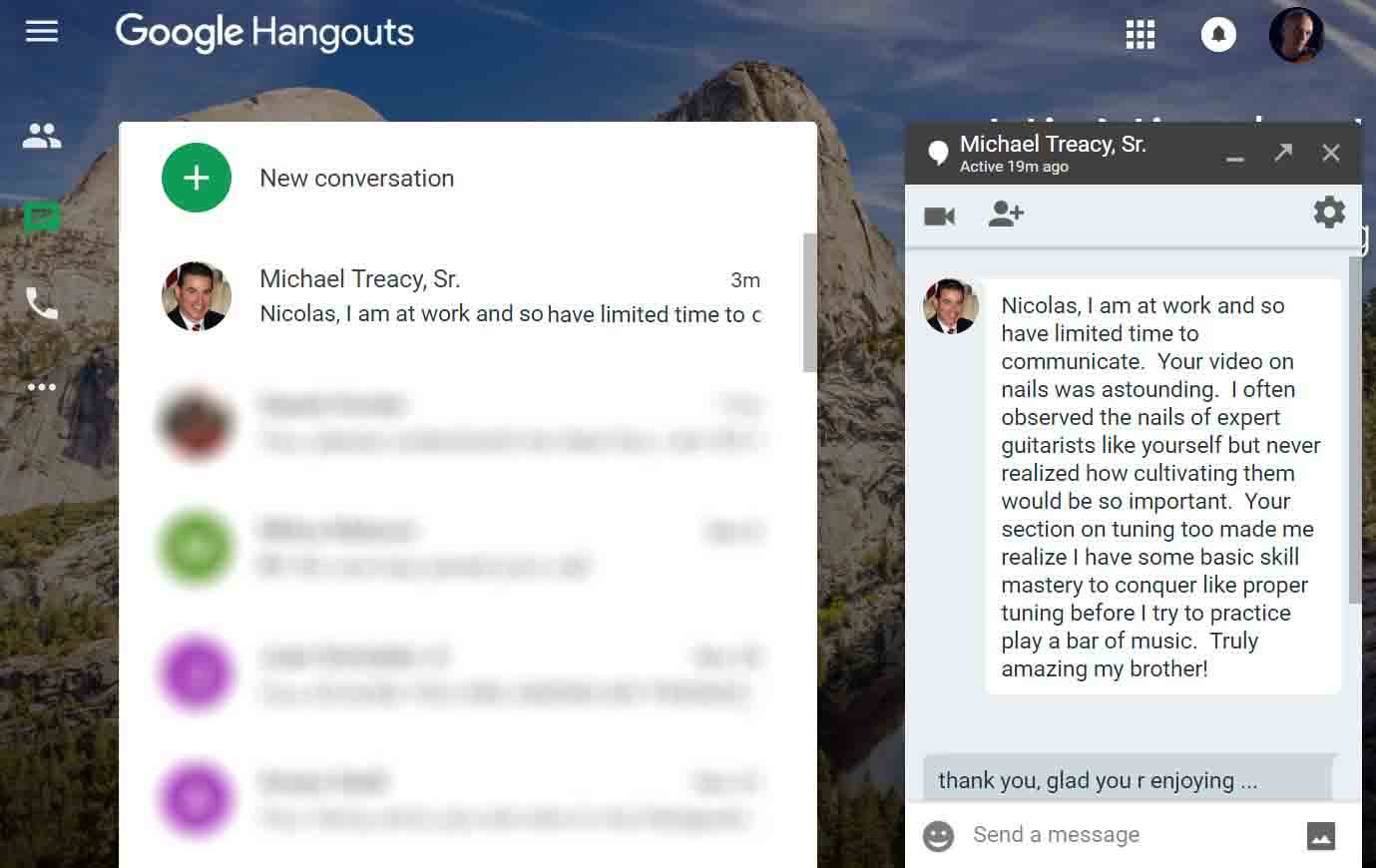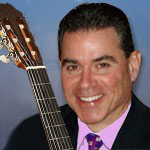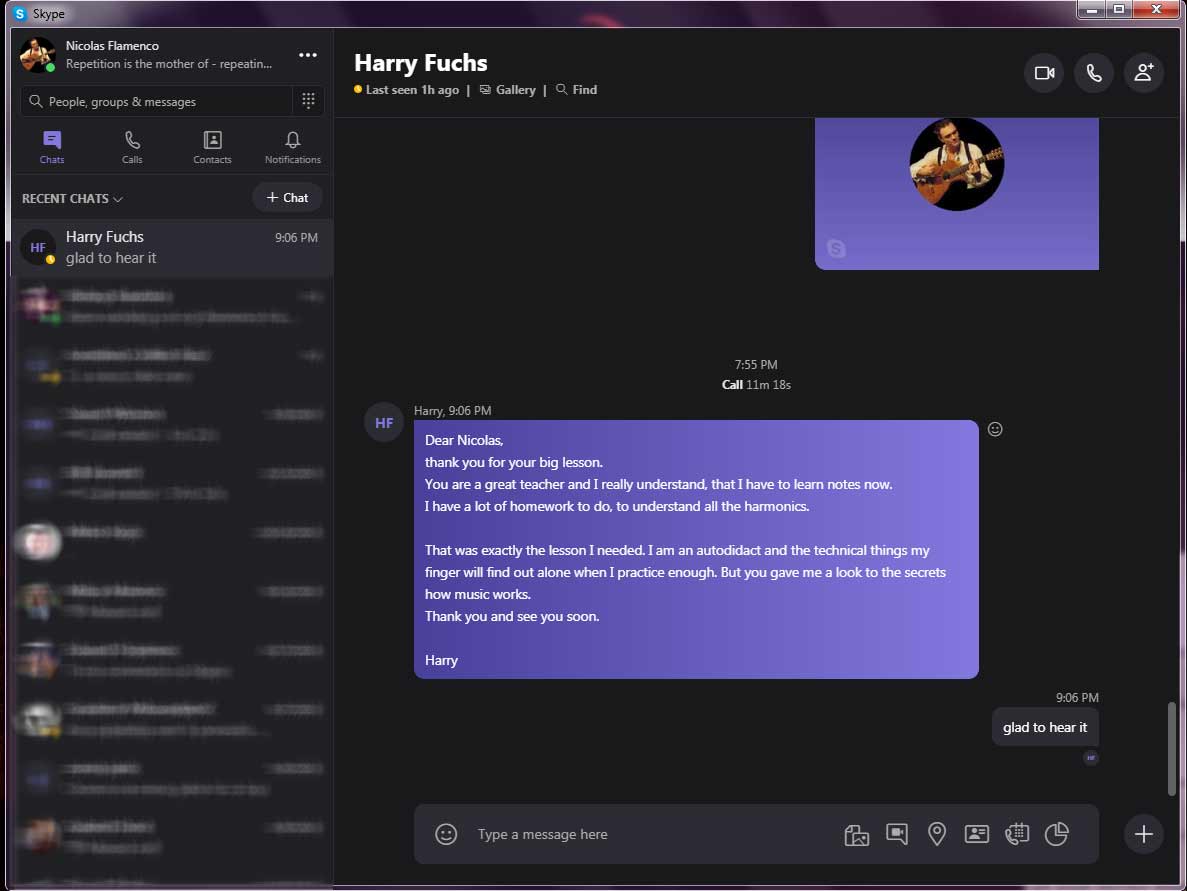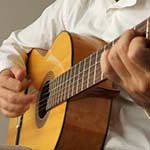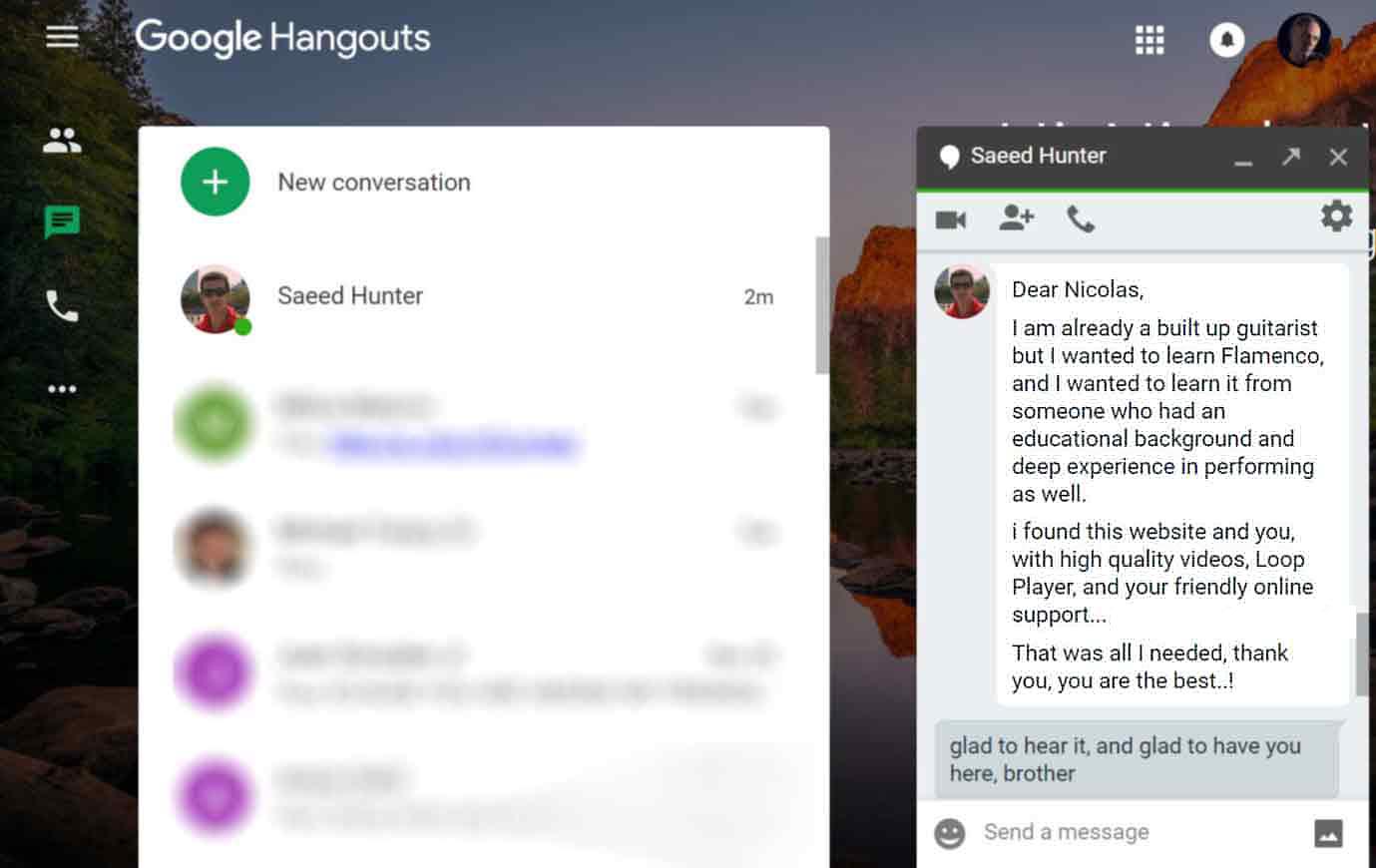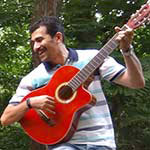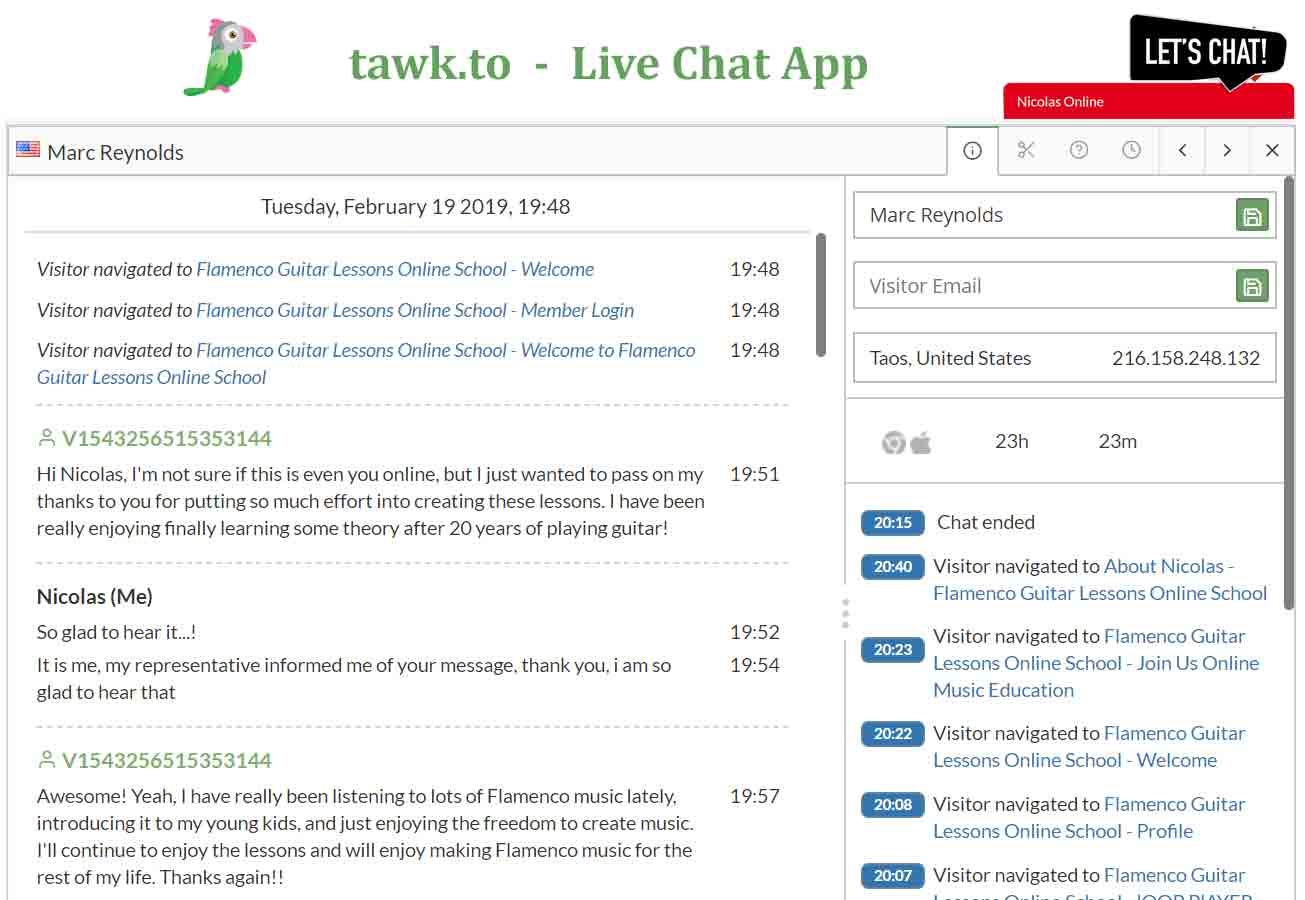Flamenco Guitar Lessons Online School - NEVER ENDING SUBSCRIPTION..!
Flamenco Guitar lessons
When you log in, the site structure is exactly the same. But in the main menu under THE METHOD - there are complete video tutorials playlists, with loop players and PDF files below the main video window. While in SOFTWARE AND TOOLS - there are the corresponding software tools, with their specialized databases.Flamenco Guitar Lessons reveals secrets, tips, and tricks for mastering both Classical & Flamenco Guitar, through a set of very comprehensive video tutorials on Harmony, Techniques, Classical Guitar, Flamenco Styles (Palos), and Nails. ALL VIDEO TUTORIALS ARE CLOUD HOSTED ON THE BEST AND THE FASTEST VIDEO CLOUD SERVER, THAT FIRST HAS - A MUCH BETTER SOUND THAN YOUTUBE. The video player has the most advanced features and variable speed. It can be accelerated up to 2.0 - or slowed down to 0.75, or to 0.50% - of the real speed of the video. It uses the latest most advanced algorithm to do the pitch re-calculation, so it works without changing the original intonation (pitch) of the actual audio signal. It is a very useful feature for a more in-depth analysis, also when slowing down the video, and observation of some extra details - when needed.
Flamenco Guitar Lessons starts exploring the technically very rich Iberian legacy and the Spanish guitar technique from its absolute roots. Precisely - observing the period from 1800 until today. It happened that the Spanish national heritage with its rich string instruments legacy after perfecting the classical guitar as an instrument (from the 1800th) - couldn't prevent any classical guitar technique from migrating into the world of flamenco guitar. That's why the flamenco guitarists today are on the technical front lines, widening flamenco language and achieving the impossible.
On the other hand, the strict classical guitar world is waiting first for some piece to be written with the newly invented flamenco technique. Never mind that the technique is already A MEANS OF EXPRESSION, literally, and only then after analyzing the piece for a few decades - the classical guitar bureaucrats will maybe let it enter the classical guitar repertoire, and finally be embedded into the classical guitar heritage. The classical guitar world is therefore still very late to adopt many fantastic flamenco techniques...! So - Flamenco Guitar Lessons explores the most important from both flamenco and the classical guitar world.
A special set of software, called Flamenco Single-Track & Multi-Track Loop Players will enable you to effectively learn the flamenco rhythm - compás. by playing along with the highest quality analog recordings of the flamenco percussion samples of guitar, bass, cajón (hand drum), palmas (handclaps), shaker, djembe, congas, bongos, maracas...and all the most used percussion instruments in flamenco.
Flamenco Guitar Lessons' very important asset is the set of the Multi-Track Loop Player Software that uses the world's unique Flamenco Samples Databases of pre-recorded MULTI-TRACK LOOP SETS.
But first, there is a set of 4 Single-Track Loop Player software players, (Rumba, Tangos, Bulerias, Alegrias), and the special dedicated green transparent markers, that follow the playback cursor - grouping the marked beats (marked with the yellow lines) in a very special way. That visual input immensely helps to understand the division of the beats and the position of accents in the flamenco compás that is in triplets.
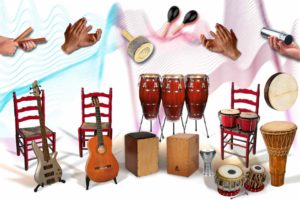
Then there is a Binary Multi-Track Loop Player for Rumba and Tangos patterns. It has Entre Dos Aguas A and B parts, rumba by Paco DeLucia - as a LOOP SETS, so you can practice the improvisation over the previously sub mixed channels you want.
And also the Ternary Multi-Track Loop Player for Bulerias, Alegrias, and all the odd flamenco 3/4 rhythms. Just the glimpse on the "palmas" tracks, (divided into 4 different handclaps types) - reveals all secrets of the flamenco compás...!
The Full Arrangements Player is a studio-like addition to this learning platform. It offers a studio insight into the process of production and the very creation of flamenco music. It uses the multi-track platform offering full arrangements of Bulerias and Alegrias and all their accompanying instruments on their individual audio channels. The multi-track engine with Solo, Mute and Volume slider is very similar to any DAW - Digital Audio Workstation.
All the samples in all the databases were carefully recorded, selected and produced over the period of the last 25 years. All the samples are coming from the real, applied music, and the very organic nature of the samples - totally prevents the option to ever get bored from one and the same repetitive sound, like on many rhythm machines...
Alegrias De Nicolas - Sueño El Sol - ( I Dream The Sun)
Tangos De Nicolas Con Miguel Sevillano
Welcome To Flamenco Guitar Lessons
Flamenco Guitar History
Flamenco Guitar Lessons starts from explaining the history of the guitar from the ancient Roman empire, and with the Iberian peninsula developing, due to its geographical location, as the western cultural center of the cradle of empires – Mediterranean Sea.After culturally very fertile ancient times, until the 3rd century A.D. - central-southern Europe, or practically - today's Italy, descended into more than a 1000 years of darkness - from the 3rd all up to the 15th century. From the 6th century, Islam spread all across Northern Africa and also over Gibraltar, into Europe. The Moors ruled southern Europe from 711th to 1490s. Unfortunately, the Muslims were the ONLY ones that preserved the ancient Grecco Roman cultural heritage for the future - or precisely until the Renaissance. Their mathematics, astronomy, anatomy and medicine, and all other sciences were very advanced for the times. But their social standards and mutual humane understanding were even more advanced than in many societies of today.
In the medieval Moz-Arab society the healthy social relations and cultural transfer among the generations - were the base for art development as well. During that epoch, the Arabic world extended from the very east to the most west of the Mediterranean sea. In 822nd, a musician and a scientist called Ziryab came from ancient Baghdad to the center of Andalucia, or Granada. It was a fortress city then called Alhambra, from which the Moors ruled the whole southern Iberia - Andalusia. Coming from the cradle of the Islamic world to the “new conquered colonies” and with a wide variety of interests, Ziryab rapidly became a trendsetter. He was the one that is supposed to have added the 5th string to the ancient 4 strings lute.
In the Arabic world, the artist was very well respected. The early Gypsies coming from the Punjab province in India, that started populating Iberia in the 12th century have been let to take Muslim religion. Then, as “culturally adopted”, they started inheriting and playing Moorish strings instruments and music as their own. By living the nomadic life and traveling, they were the main carriers of the essential in music legacy between the different rulers. They were the ones that captured the essence of Iberian music, passing it from the Muslims later to the Christians and of course, adding their personal touch to it. Their preserved heritage gradually became the flamenco culture that we have today.
The Christian wars in the 15th century plunged the culture back into darkness. The old document from the PDF book is the Gaspar Sanz’s 5 string guitar, from 1674th. It shows his primitive understanding of harmony, and the construction of the 4 strings lute with added 5th bass string. After the change of power from Muslims to Christians in the 1492nd, all the remaining Gypsies, living in deserts or “sierras” - continued the same naturalization process they were on for centuries. They were the catalyst that took all that knowledge into modernity.
Thanks to the very rich strings instruments legacy, and with the slow gradual cultural development progress - the modern guitar was able to develop in the 18th century. The modern guitar with 6 strings and contemporary tuning with fourths and a major third, starts to appear in the second half of the 18th century, around 1780. The technical development at the times, and later the industrial revolution, allowed for more sophisticated instruments to appear. That process using a "Gypsy type strings" slowly led to the appearance of the classical guitar on the Iberian peninsula, at the beginning of the 19th century. Although the Gypsies were playing it for themselves, the flamenco guitar, in fact, came AFTER the classical guitar. It happened because when the Gypsies saw the classical guitar entering the high society, they immediately started accepting it as a part of their own culture.
From the beginning of the 19th century in Spain, with the classical guitar coming to the world music stage and being played more and more in the elite society, the gypsies rapidly adopted this new 6 string instrument as their own. Started populating western Europe from the east during the Moz-Arabs ruling in the 12th century, these Gypsy “guests” that remained after the 15th century Christian conquistadors in 1492. (Castilla and Toledo's alliance expelled (almost) all Jews, Arabs, and Gypsies), were still traveling nomads that were still spreading their spirit and the desire for freedom over the same Iberian peninsula. Their nomadic freedom ideology under years of repression - created the very essence of the Flamenco culture we have today.
Once the industrial revolution distributed precision tools and standards over the planet, the more precisely crafted instruments were available for the masses, and since then – the design of the Spanish guitar didn’t change even a bit. In early flamenco records, there is no guitar mentioned, because they were just too poor to own one. The Gypsies populating the southern Iberia never had money to obtain the metal strings for their instruments. They were forced to use the dried animal intestines for strings and first started playing on those instruments just with fingers, using the nails in a very special "rotary" way, without any bone pick. Although they were the only catalyst (Jews and Arabs were never too much inclined to flamenco) of the musical essence and all the flamenco techniques, which will definitely influence the mainstream music and the classical guitar development - the very apparition of the Spanish guitar, but the first purely flamenco guitar, and not classical guitar - will not appear until the middle of the 19th century. In fact, the first Flamenco Guitar Lessons were maybe started being given first only in the second half of the 20th century, The reason is the terrible reputation that the flamenco guitar had on the Iberian Peninsula. It was considered a low-class society street instrument, especially from the intentional disrespect from the white population that listened to "city music" played on bandurrias and laudes. Also, the "elite classical guitarists" that wanted to be distinguished from any Gypsy street musicians, especially from the moment the Gypsies adopted it as their own instrument. But despite that the Gypsies were the only catalyst of the authentic Iberian sound and music, it took quite some time, (well into the 20th century) that the white population accepts flamenco into and as their own national heritage.
Flamenco Guitar Lessons guitar playing style came from their different approaches to this newly emerged and perfected 6 string instrument. Instead of performing it plucking the strings by pulling and releasing them with the fingers (like classical guitarists, which would require a certain level of precision and fingernails hygiene); their approach to it was much cruder. They started using the whole body of the guitar as a percussion instrument, hitting the front board to create the sound and playing the “golpe” hit, paving the way for the “golpe” protection plate to appear. Every different ethnicity had its different style or "palo" of music, so today there are some 36 different flamenco palos in existence. But the most important is that they invented a whole new technique from scratch, hitting the strings with the top of the fingernails with circular repetitive motion; using as a pivot base both the wrist and the finger base joint with the anchored thumb. Therefore creating the base of the “Rasqueada”, as opposed to “Punteada” guitar, (today being the flamenco and the classical guitar).
For the last 200 years, both the classical and the flamenco guitar remain literally one and the same unchanged instrument. But a huge evolution of flamenco techniques happened in the second half of the 20th century, and those flamenco techniques are still evolving..! On the other hand, the classical guitar techniques were still being strict to expand, and just as always, waiting first for some piece to be written, and then slowly that newly emerged technique after having prooved that it really elaborates certain technique and can be used as a means of expression - finally deserves its place among classical guitar heritage..?!? This system is stupid and strict where it shouldn't be if you ask me..! It is SLOWING DOWN the classical guitar development and its repertoire and making jealous all classical guitarists :)
Anyway, gracias a Dios (thank God), having some amazing artists through the last 200 years has significantly enriched the whole world’s guitar national heritage in giant steps. First in classical guitar - Fernando Sor and Francisco Tarrega, in the 19th century, and then, of course, the VERY IMPORTANT popularisation of the Spanish guitar of Andres Segovia at the beginning of the 20th. And of course, Paco De Lucia in flamenco in the 2nd half of the 20th century.
So today we have an enormously rich legacy for exploration. Trust me, I've met some seriously dedicated people. The essence of the matter remained the same, but what has changed are the craftsmanship processes, and some irrelevant stuff, like the pegs mechanism, or the “golpe” plates on the front board... Our problem today is the serious shortage of wood to build guitars. Almost all forests with 7 to 8 centuries old timbers (that are essential for hi-quality instruments) - are all gone. But that is a whole other story…
Flamenco Guitar Chords Finder
Students saying:
NICOLAS: I think that no words are needed to describe this talented young man. Let me just remind you of what kind of environment he is coming from. Arkansas USA – is a city in which very few people know why guitarists have long fingernails on the right hand, neither that the Spanish Guitar is played WITH FINGERNAILS – instead of USING A PICK…?!?
But Ryan is a living example of how a man can spiritually elevate himself achieving any hights he sets his mind to. And all that he can achieve even in a completely different environment, from the culture he is exploring. Take a look, he plays completely effortlessly, he mastered the compás brilliantly – all hats down, maestro…!
RYAN: the software set of the Loop Players are the most important tools that helped me learn the rhythm, the compás. I was first repeating just the basic pattern for quite a long time, but at one moment – it just came to me, and I just suddenly understood the accents and the very essence of the rhythm. With no exaggeration: The Loop Player Softwares are HANDS DOWN – THE BEST POSSIBLE TOOLS FOR MASTERING THE COMPÁS – EVER CREATED! Nicolas bro, thank you for producing these fantastic databases and these loop sets. The engine with its grid-lines works so well – you can analyze every sample to the detail, and realize that it is a world on its own. The difference between the traditional and your method in counting the accents – is “just 200 years” of advancement apart 🙂

Ryan Ace
Arkansas, USA
NICOLAS: You couldn’t even imagine how much torture we went through, because in Yemen the download is SO WEEK that a normal video conference lesson was completely out of the question, and not even an audio connection could be ever established normally. So we went sending short videos to one another. For which Samir unfortunately sometimes had to wait a whole day to upload or download, (for just a 90 MB movie… terrible..?!?).
But we are still very proud of what we achieved in communication and understanding…!
The essence of this Video Testimonial is that Samir has learned the flamenco rhythm – COMPÁS – FROM THE SOFTWARE ON THE WEBSITE – LIVING SOME 3000 MILES FROM SPAIN – IN LESS THEN 6 MONTHS…! And on top of everything, I couldn’t even give him a proper live online lesson… Because in Yemen, the video bandwidth is restricted probably individually – on every possible gateway on the Internet, (we tried every possible video conference software…)

![]()
Samir De Mass
Sana's @ - Yemen



